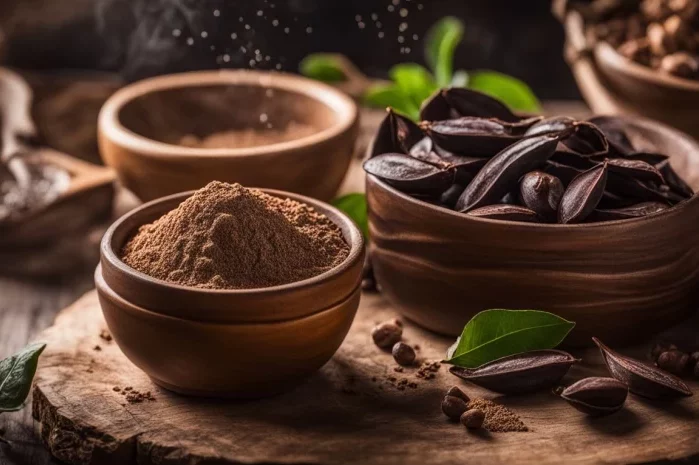Mustard greens, a staple in Chinese cuisine, offer a burst of flavor and nutrition that has been cherished for centuries. When prepared Chinese style, these greens become a delightful blend of savory, salty, and spicy elements, creating a dish that tantalizes the taste buds and satisfies the soul. In this comprehensive guide, we’ll delve into the art of cooking mustard greens Chinese style, exploring techniques specific to Chinese cuisine, cultural context, and offering clear instructions for a delectable dish.
Recipe with Clear Instructions:
Ingredients:
- 1 bunch of fresh mustard greens
- 2 cloves of garlic, minced
- 1-inch piece of ginger, finely chopped
- 2 tablespoons soy sauce
- 1 tablespoon oyster sauce
- 1 tablespoon vegetable oil
- 1 teaspoon sesame oil (optional)
- Red chili flakes or fresh chili peppers (optional, for heat)
- Salt to taste
Instructions:
1. Prep the Mustard Greens: Start by rinsing the mustard greens under cold water to remove any dirt or debris. Trim off any tough stems and discard. Cut the leaves into bite-sized pieces and set aside.
2. Heat the Oil: In a wok or large skillet, heat the vegetable oil over high heat until it shimmers.
3. Add Aromatics: Add the minced garlic and chopped ginger to the hot oil. Stir-fry for about 30 seconds or until fragrant, being careful not to burn them.
4. Stir-fry the Mustard Greens: Add the prepared mustard greens to the wok. Stir-fry continuously for 2-3 minutes or until the greens are wilted but still vibrant green in color.
5. Seasoning: Drizzle the soy sauce and oyster sauce over the mustard greens. Add the optional sesame oil and chili flakes or fresh chili peppers for heat, if desired. Toss everything together until the greens are evenly coated with the sauce.
6. Taste and Adjust: Taste the mustard greens and adjust the seasoning if necessary, adding salt to taste.
7. Serve: Transfer the cooked mustard greens to a serving dish and serve hot as a side dish or part of a larger Chinese meal.
Ingredient List:
- Mustard greens: 1 bunch
- Garlic: 2 cloves
- Ginger: 1-inch piece
- Soy sauce: 2 tablespoons
- Oyster sauce: 1 tablespoon
- Vegetable oil: 1 tablespoon
- Sesame oil: 1 teaspoon (optional)
- Red chili flakes or fresh chili peppers: to taste (optional)
- Salt: to taste
Substitutions:
If oyster sauce is unavailable, you can substitute with hoisin sauce or vegetarian oyster sauce for a similar umami flavor.
Peanut oil or canola oil can be used instead of vegetable oil for stir-frying.
Cooking Time and Equipment:
- Cooking time: Approximately 10 minutes
- Equipment: Wok or large skillet
Techniques Specific to Chinese Cuisine:
1. Stir-frying Basics:
Stir-frying is a fundamental cooking technique in Chinese cuisine that requires high heat and quick cooking. The hot wok or skillet allows for rapid cooking, preserving the vibrant colors and fresh flavors of the ingredients. Stir-frying also creates a delightful contrast in texture, with vegetables retaining their crispness while absorbing the savory sauces.
2. Flavor Profiles:
Chinese cuisine emphasizes a balance of flavors, including salty, savory, sour, and potentially spicy elements. In the case of mustard greens, the combination of soy sauce and oyster sauce provides a rich umami base, while garlic and ginger add depth and aroma. The optional addition of chili peppers adds a touch of heat, further enhancing the complexity of the dish.
3. Common Ingredients:
Garlic and ginger are aromatic staples in Chinese cooking, lending their distinctive flavors to countless dishes. Soy sauce, made from fermented soybeans, adds saltiness and depth of flavor, while oyster sauce contributes a unique umami richness. Chili peppers, whether in the form of flakes or fresh, offer a fiery kick that elevates the dish to another level of deliciousness.
4. Regional Variations:
While the basic technique of stir-frying mustard greens remains consistent across China, there are regional variations in seasoning and additional ingredients. For example, in Sichuan cuisine, mustard greens may be cooked with Sichuan peppercorns and chili bean paste for a numbingly spicy flavor profile, while Cantonese cuisine might favor a lighter seasoning with just a hint of sweetness.
Cultural Context and Tips:
1. Significance of Mustard Greens in Chinese Cuisine:
Mustard greens hold a special place in Chinese cuisine, valued for their vibrant flavor and nutritional benefits. In traditional Chinese medicine, mustard greens are believed to have cooling properties and are often consumed during the hot summer months to help regulate body temperature. They are also versatile ingredients, featured in soups, stir-fries, and pickled preparations.
2. Serving Suggestions:
Serve Chinese-style mustard greens as a side dish alongside steamed rice and your favorite protein, such as tofu, chicken, or pork. For a complete Chinese meal, pair the greens with other stir-fried vegetables, a protein dish like kung pao chicken or sweet and sour pork, and perhaps a bowl of hot and sour soup or egg drop soup.
3. Tips for Selecting and Storing Mustard Greens:
When selecting mustard greens, choose bunches with crisp, vibrant leaves and avoid any that appear wilted or discolored. Store unwashed mustard greens in the refrigerator, wrapped in a damp paper towel or cloth to maintain freshness. Use them within a few days for the best flavor and texture.
4. Troubleshooting:
If your mustard greens turn out bitter after cooking, it may be due to overcooking or using older greens. To mitigate bitterness, blanch the greens in boiling water for a minute before stir-frying, or add a pinch of sugar to the sauce to balance the flavors.
By following these tips and techniques, you can master the art of cooking mustard greens Chinese style, transforming this humble vegetable into a culinary masterpiece that delights the senses and honors the rich tradition of Chinese cuisine. Enjoy the vibrant flavors and nourishing goodness of this timeless dish!


























